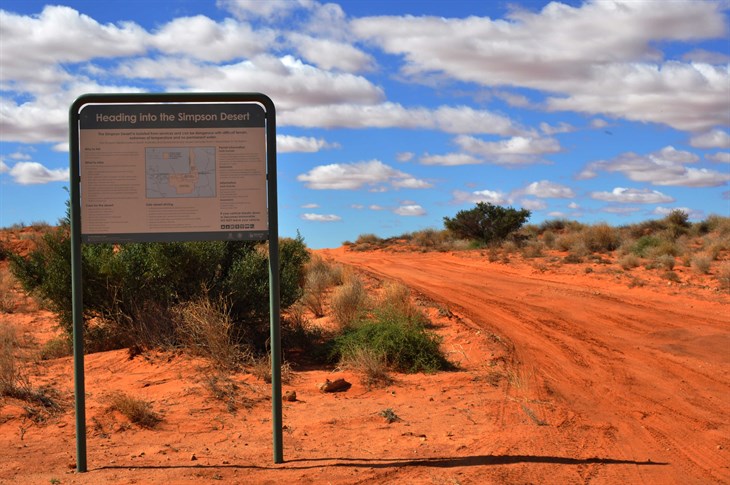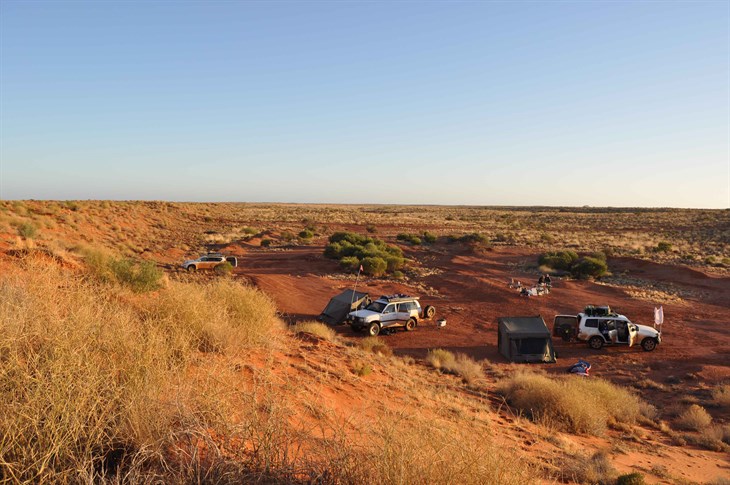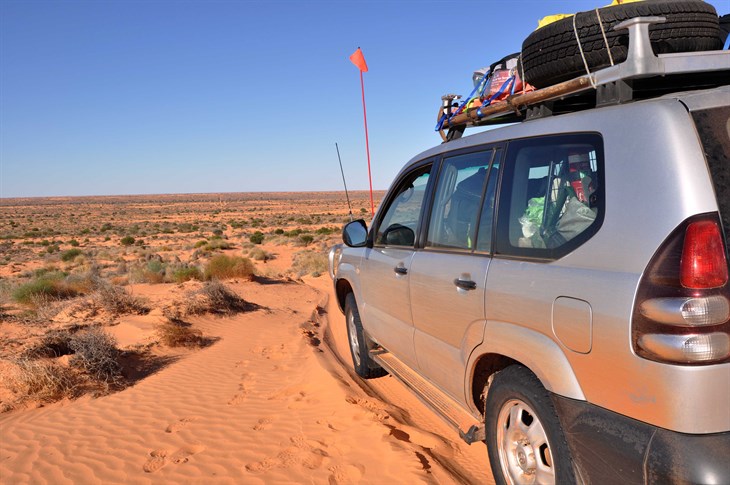Iconic Destination: Simpson Desert
To most people the Simpson Desert is in the middle of that fictional place called nowhere and yet it’s just under 1000km from Adelaide in South Australia.

This is a trip that enables people to get away from it all, to journey to places often just spoke about, a trip that evokes different feelings for different people.
Some people like the solitude, some like the 4 wheel driving but mostly it’s about the journey, about travelling with your mates or simply that challenge of doing something and coming out the other side.
The Simpson Desert lies in the north eastern corner of South Australia, the south western corner of Queensland and the south east of the Northern Territory. It comprises an area of around 175, 000km2 and consists of sandy plains and dunes.
The simplest crossing of the desert has about 1100 dunes all up, I started counting them and in my joy expressed this over the UHF. I was told in no uncertain terms to shut up!
It is Australia’s 4th largest desert and believe it or not it is on just about everyone’s bucket list to travel across.
When is the best time to visit?
Summer is not the ideal time to do a desert crossing, anywhere, and besides it’s closed by the Desert Parks agency in South Australia during this time. If you want to enjoy your desert crossing then wait for it to cool down a little, say around April before you plan this trip.
Yes, you can leave it later and in fact some people try to avoid midyear when school holidays are on. The latest I’d leave it would be around September or October, but only if it is looking a little cooler than usual.
From my perspective though I’d plan to visit between May and July, the weather is generally great with clear blue skies and crisp mornings. Be aware though it can get below zero at times.
Camping Options
There are a couple of organised campsites across the Simpson Desert but mostly you pick a spot before the sun goes down and set up camp. How you camp is completely up to you though.
Some people camp in swags, others put up tents and some take camper trailers although this is not recommended by the SA Parks.
There aren’t many toilets either so please bury your waste and don’t make the desert your rubbish dump.

What to take/preparation
Make sure your vehicle is well prepared and serviced. Ensure your suspension is up to the rigours of outback travel and check your tyres to make sure you have at least 50% of your tread left.
Depending on how old your car is take a few spare parts, think of the things that you can’t do without like fan belts, radiator hoses and spare oil.
When it comes to loading your car make sure you don’t overload it. Overloading is dangerous and also impacts on the way your vehicle handles when driving.
If you’re travelling alone make sure you take some recovery gear like Maxtrax, a winch or an exhaust jack, that way you won’t have to rely on someone else to come along and help you out. If you’re travelling in a group you can share the gear between you.
Always carry extra food and water in case you get delayed for some reason and make sure you’re carrying enough fuel, plus a safety margin, to get you where you want to go.
If you want to talk to fellow travellers or your mates install an UHF radio. It also means that you can announce yourselves as you come over the bigger dunes!

Supplies and Facilities
You can cross the Simpson Desert from either side, east or west, and this provides a range of opportunities to stock up for your journey. Birdsville on the eastern side has a service station, bakery and a small store whilst if you’re coming from the west, Mt. Dare Station has the bare essentials like fuel, takeaways and a small amount of store items.
Both places have bar facilities so you can grab a drink before you set off into the desert proper.
Trip Standard
Road or, should I say track, conditions can vary dramatically so be prepared. Keep an eye out on weather and road conditions so you don’t get caught out.
Normal conditions will see corrugations and lots of sand driving. It is recommended that you let some pressure out of your tyres to make getting up and over some of the dune crests that much easier.
Take it easy and you’ll enjoy the trip that much more than rushing it.

Contacts and Information
You can visit Travel Outback Australia for information on the desert or, as most of the journey is in parks and reserves, you can contact the National Parks South Australia for more information or visit their website.
Permits and Maps
A Desert Parks Pass is required to travel across the desert on the South Australian side. The pass is easily obtained online but you can purchase it at selected places like Mt. Dare, Oodnadatta, William Creek and Innamincka.
It costs $150 per vehicle and provides access and camping to all the parks in the area.
There are plenty of maps available, either in digital or paper form. We recommend Hema maps such as the Great Desert Tracks Atlas and Guide or you can pick up the paper map of the Simpson Desert from most map shops or automobile associations. You can also download one of the apps to your phone or tablet and track yourself in real time.
The Tyres for the Job
Most four wheel drives come from the factory with general purpose tyres made to provide a smooth ride but very little off road traction. Sure, they can take you across the desert but we recommend getting at least an all terrain tyre, if you spend more time on the bitumen then a 70% on-road and a 30% off-road pattern will suffice but if you’re like us and spend more time off road then we suggest a tyre with 50% on-road and 50% off-road tread pattern.
As it’s recommended that you let your tyres down, strong sidewalls are also a must in my opinion so look for a tyre that is light truck rated. A good start would be Cooper Tires S/TMAXX.
Written by Gary, Travel Outback Australia

